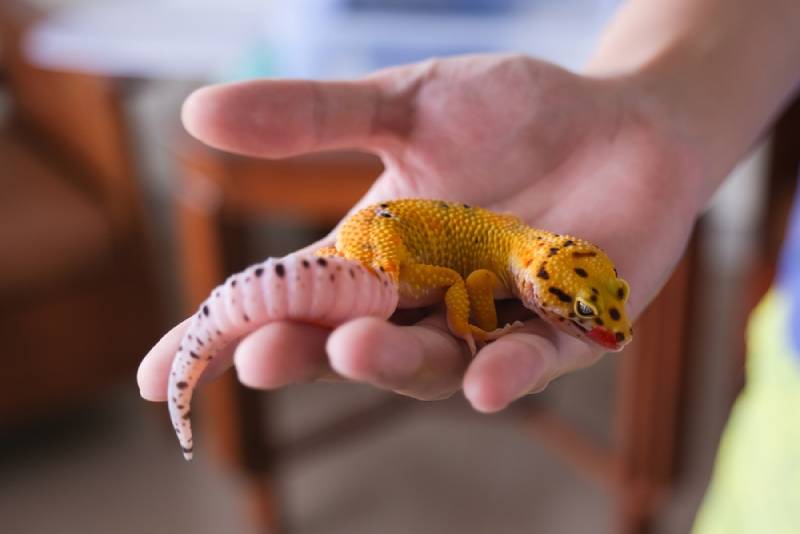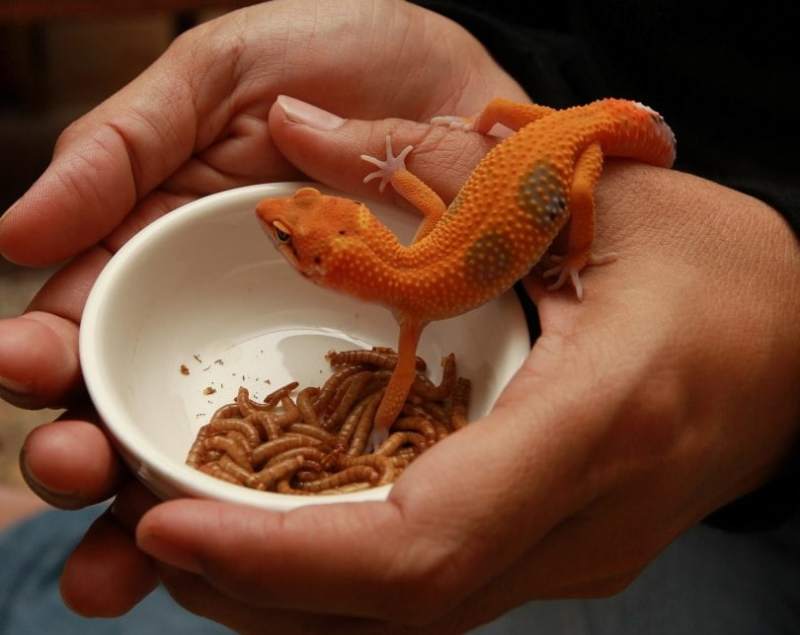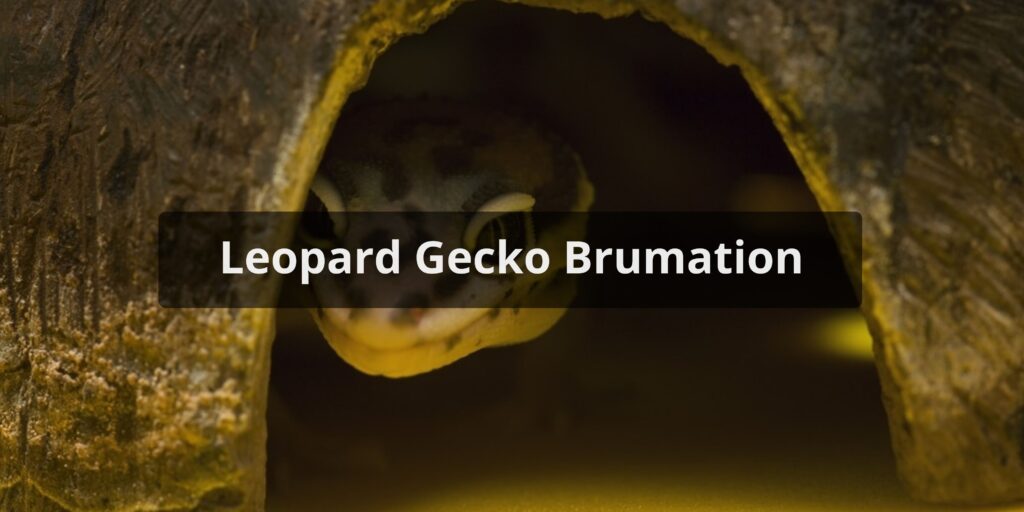Leopard gecko brumation is a fascinating natural phenomenon seen in many reptiles, including the popular leopard gecko. As leopard gecko owners, it’s important we understand brumation so we can properly care for our pets during this period. In this article, we’ll explore what exactly brumation is, what causes it, signs to look out for, and how to ensure our leopard geckos stay healthy through their brumation period.
What is Brumation?

Brumation is essentially the reptile version of hibernation seen in mammals. It’s a period of dormancy and reduced activity that helps reptiles conserve energy during parts of the year when conditions are unfavorable, such as winter or dry/hot seasons.
During brumation, leopard geckos become less active, eat and drink less, and spend more time hiding or sleeping. Their metabolism slows down dramatically. This is all totally normal reptile behavior that allows them to survive periods of scarcity in the wild.
What Causes Brumation in Leopard Geckos?
In the wild, leopard geckos brumate during the winter months when temperatures are cooler and prey is more scarce. Captive leopard geckos may also brumate based on seasonal cues like light cycle and temperature drops in your home.
Factors that can trigger brumation include:
- Decreasing daylight hours in fall/winter
- Temperature drops in the vivarium
- Lack of heat from overhead heating elements
- Overall drop in environmental temperature as seasons change
Not all captive leopard geckos will brumate every year. Some may only do short brumation periods based on conditions. Females may not brumate when gravid (carrying eggs).
Signs Your Leopard Gecko is Brumating

Here are some common signs your leopard gecko is entering a brumation period:
- Hiding more often, less exploratory behavior
- Lethargy, moving slowly, sleeping a lot
- Loss of appetite, refusing food
- Weight/muscle loss over time
- Cool body temperature when handled
- Lack of interest in surroundings
- Overall lack of normal activity
These are all normal brumation behaviors. Your leopard gecko knows what they need to do. As long as you monitor them and meet their basic needs during this time, they will be just fine.
Caring for a Brumating Leopard Gecko

While brumating leopard geckos can mostly be left alone, there are a few things you need to do as an owner to keep them comfortable and healthy:
- Provide a warm hide: Maintain one warm, dry hide between 85-90°F so they can properly thermoregulate as needed. The ambient temperature can be lowered to 70-75°F.
- Hydration: Provide fresh, dechlorinated water at all times in case they drink. Drops of water can also be applied to the snout.
- Occasional soak: A lukewarm soak 1-2 times a month will help with hydration. Do not force feed.
- Health checks: Weigh regularly to ensure they don’t lose too much weight. Look for signs of illness.
- Supplements: Use plain calcium 1-2 times a month. Multivitamins are not needed if not eating.
- Sanitation: Spot clean waste, change water. Disinfect tank at end of brumation.
Monitor brumating geckos closely. If they lose more than 10-15% body weight or show signs of illness, consult an exotic vet. Most will emerge from brumation once conditions improve.
Conclusion
Brumation is a natural part of the leopard gecko life cycle. By understanding what drives brumation and preparing their habitat properly, we can ensure our leopard geckos remain healthy through their dormancy period. Monitor for weight loss, dehydration, and illness. With proper care, your leopard gecko will emerge hungry and active again when their brumation period concludes.
FAQs About Leopard Gecko Brumation
What are the signs of a brumating leopard gecko?
Signs of brumation in leopard geckos include reduced activity, decreased appetite, weight loss, and spending extended periods hiding in a cool, dark place. They may also appear lethargic and less responsive. These behaviors are natural responses to seasonal changes.
How long does brumation typically last for leopard geckos?
Brumation duration can vary, but it generally lasts for a few weeks to a few months, typically during the cooler months of late fall and winter. Some geckos may emerge from brumation sooner than others, influenced by factors like temperature and individual health.
Do leopard geckos need special care during brumation?
Leopard geckos in brumation require minimal care. Ensure they have access to clean water, but avoid disturbing them. Maintain a stable, cooler temperature in their enclosure. It’s essential to allow them to go through this natural process without interference.
Can I wake up my gecko from brumation if I’m concerned?
It’s not advisable to wake up a gecko from brumation unless there are compelling health concerns. Attempting to rouse them prematurely can cause stress and disrupt their natural cycle. If you have concerns, consult a reptile veterinarian instead of intervening.
What should I do if my gecko refuses to eat during brumation?
It’s normal for geckos to refuse food during brumation. Avoid offering food during this period, as they won’t eat. Focus on maintaining their enclosure conditions and allowing them to complete their natural brumation cycle. Resume feeding when they become more active and alert after brumation.



